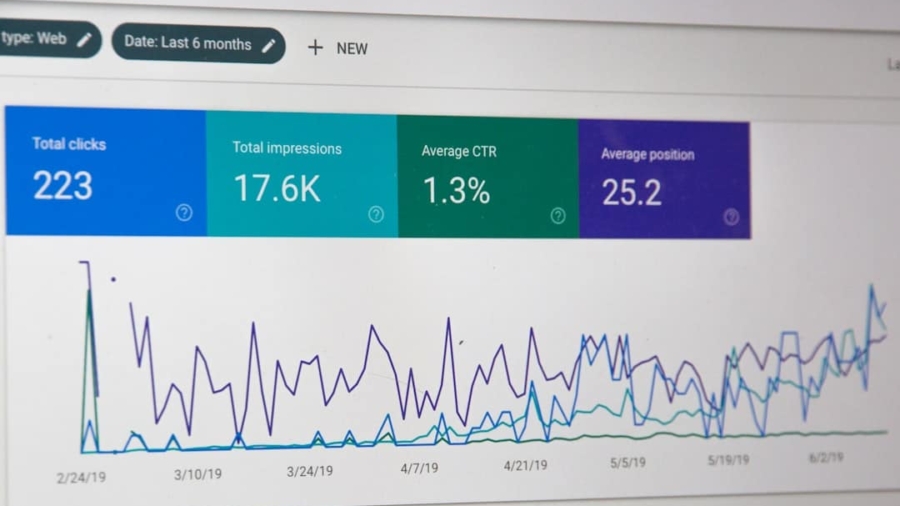The gaming industry has undergone a remarkable transformation over the past few decades, evolving from simple pixelated graphics and rudimentary gameplay to complex, immersive experiences that captivate millions of players worldwide. At the heart of this evolution lies the concept of big data, a term that refers to the vast volumes of structured and unstructured data generated by players, games, and gaming platforms. This data encompasses everything from player interactions and in-game purchases to social media engagement and community feedback.
As technology advances, the ability to collect, analyze, and leverage this data has become increasingly sophisticated, allowing game developers and publishers to gain insights that were previously unimaginable. Big data in gaming is not merely a trend; it represents a paradigm shift in how games are developed, marketed, and played. The integration of big data analytics into the gaming ecosystem enables stakeholders to make informed decisions based on real-time data rather than relying solely on intuition or traditional market research methods.
This shift has profound implications for game design, player engagement, and monetization strategies. By harnessing the power of big data, the gaming industry can create more engaging experiences that resonate with players on a personal level, ultimately driving growth and innovation.
Key Takeaways
- Big data has revolutionized the gaming industry by providing valuable insights and opportunities for growth.
- Big data has influenced gaming trends by enabling developers to understand player preferences and behavior.
- Predictive analysis using big data helps in understanding player behavior and creating personalized gaming experiences.
- Big data is utilized to create personalized gaming experiences that cater to individual player preferences and habits.
- Big data plays a crucial role in game development and design by providing insights into player engagement and preferences.
The Impact of Big Data on Gaming Trends
The influence of big data on gaming trends is evident across various dimensions of the industry. One significant area is the emergence of live service games, which are designed to evolve continuously based on player feedback and behavior. Titles like “Fortnite” and “Apex Legends” exemplify this trend, as they utilize real-time data analytics to adjust gameplay mechanics, introduce new content, and refine monetization strategies.
By analyzing player engagement metrics, developers can identify which features resonate with their audience and which do not, allowing them to pivot quickly in response to player preferences. Moreover, big data has facilitated the rise of esports, transforming competitive gaming into a global phenomenon. Organizations now analyze vast amounts of data related to player performance, match statistics, and audience engagement to optimize team strategies and enhance viewer experiences.
For instance, platforms like Twitch leverage big data to provide personalized content recommendations based on user behavior, thereby increasing viewer retention and engagement. This data-driven approach not only enhances the competitive landscape but also creates new revenue streams through targeted advertising and sponsorships.
Predicting Player Behavior through Big Data Analysis
One of the most compelling applications of big data in gaming is its ability to predict player behavior. By employing advanced analytics techniques such as machine learning and predictive modeling, developers can gain insights into how players are likely to interact with their games. For example, by analyzing historical data on player engagement, spending patterns, and social interactions, developers can identify trends that inform future game design decisions.
This predictive capability allows for more strategic planning in terms of content releases, marketing campaigns, and community engagement initiatives. A practical example of this can be seen in mobile gaming, where companies like Supercell utilize big data analytics to understand player retention rates and churn predictions. By segmenting players based on their behavior—such as time spent in-game or frequency of purchases—developers can tailor their approaches to different player segments.
This might involve offering incentives to at-risk players or creating targeted marketing campaigns that resonate with specific demographics. The ability to anticipate player needs not only enhances user satisfaction but also drives revenue growth by optimizing monetization strategies.
Utilizing Big Data for Personalized Gaming Experiences
Personalization has become a cornerstone of modern gaming experiences, and big data plays a pivotal role in achieving this goal. By analyzing individual player data, developers can create tailored experiences that cater to the unique preferences and behaviors of each user. This level of customization can manifest in various ways, from personalized in-game content recommendations to adaptive difficulty levels that respond to a player’s skill level.
For instance, games like “The Elder Scrolls Online” employ big data analytics to track player choices and preferences throughout their gameplay journey. By understanding how players interact with the game world—such as which quests they pursue or which character classes they prefer—developers can offer personalized content that enhances immersion and engagement. Additionally, personalized marketing strategies can be implemented based on player behavior, ensuring that players receive relevant offers that align with their interests.
Furthermore, big data enables developers to create dynamic in-game economies that respond to player actions. By analyzing transaction data and player interactions within the game world, developers can adjust pricing models for in-game items or introduce limited-time offers that create a sense of urgency among players. This not only enhances the overall gaming experience but also drives revenue through increased player spending.
The Role of Big Data in Game Development and Design
The integration of big data into game development processes has revolutionized how games are designed and refined. Traditionally, game development relied heavily on creative intuition and market research; however, big data provides a wealth of empirical evidence that informs design decisions. Developers can analyze player feedback from beta tests or early access releases to identify pain points or areas for improvement before the official launch.
For example, during the development of “Destiny 2,” Bungie utilized big data analytics to assess player engagement with various game modes and activities. By monitoring how players interacted with different aspects of the game—such as raids, strikes, or PvP modes—the development team could make informed adjustments to enhance gameplay balance and overall enjoyment. This iterative approach allows for a more responsive development cycle that prioritizes player satisfaction.
Moreover, big data facilitates collaboration between different departments within a game studio. Designers can work closely with data analysts to understand how gameplay mechanics impact player behavior, leading to more cohesive design choices that align with player expectations. This synergy between creativity and analytics fosters an environment where innovative ideas can flourish while remaining grounded in empirical evidence.
Big Data and the Future of Gaming
Enhancing Gameplay Experiences with AI and VR
AI algorithms can analyze vast datasets in real-time to create adaptive gameplay experiences that respond dynamically to player actions. This technology has the potential to create immersive and engaging experiences that are tailored to individual players.
The Rise of Cloud Gaming and Data Collection
The integration of big data with cloud gaming platforms is set to revolutionize how games are delivered and experienced. With services like Google Stadia and NVIDIA GeForce Now gaining traction, players can access high-quality gaming experiences without the need for powerful hardware. This shift opens up new avenues for data collection and analysis as player interactions are captured across diverse devices and environments.
Unlocking Nuanced Understanding of Player Behavior
As the gaming landscape becomes increasingly interconnected through online multiplayer experiences and social platforms, the potential for big data analytics will expand exponentially. Developers will have access to richer datasets that encompass not only individual player behavior but also social dynamics within gaming communities. This holistic view will enable a more nuanced understanding of player motivations and preferences, paving the way for even more engaging experiences.
Ethical Considerations and Privacy Concerns in Big Data Gaming Analysis
While the benefits of big data in gaming are substantial, they also raise important ethical considerations and privacy concerns that must be addressed. The collection and analysis of player data often involve sensitive information that can impact user privacy if not handled responsibly. Game developers must navigate the fine line between leveraging data for enhanced experiences and respecting players’ rights to privacy.
One significant concern is the potential for misuse of personal data. Players may be unaware of how their information is being collected or used, leading to feelings of distrust towards game developers. Transparency is crucial; companies must clearly communicate their data collection practices and ensure that players have control over their information.
Implementing robust privacy policies and adhering to regulations such as GDPR (General Data Protection Regulation) is essential for building trust within the gaming community. Additionally, there is a risk of creating echo chambers or reinforcing negative behaviors through targeted content delivery based on player data. For instance, if a game continually presents players with content that aligns with their existing preferences without introducing diversity or challenge, it may hinder their overall experience.
Developers must strike a balance between personalization and ensuring that players are exposed to a variety of gameplay elements that promote growth and exploration.
The Potential of Big Data in Shaping the Gaming Industry
The potential of big data in shaping the gaming industry is immense, offering opportunities for innovation across all facets of game development and player engagement.
However, it is imperative that stakeholders remain vigilant about ethical considerations surrounding data privacy while striving for transparency in their practices.
As we look ahead to the future of gaming, it is clear that big data will play an integral role in driving growth and enhancing player experiences. The ability to analyze vast amounts of information will empower developers to create more engaging worlds that resonate with players on a deeper level while fostering communities built on shared experiences. Ultimately, the intersection of big data and gaming represents a frontier ripe for exploration—one that promises exciting developments for both players and creators alike.
In a related article on enicomp.com, the top trends on LinkedIn for 2023 are discussed, highlighting the importance of staying informed about the latest developments in the professional world. This article complements the discussion on predicting gaming trends and player behavior by emphasizing the significance of keeping up with industry trends and advancements. To read more about the top trends on LinkedIn for 2023, click here.
FAQs
What is big data in the context of gaming?
Big data in gaming refers to the large volume of structured and unstructured data generated by players, game interactions, and in-game activities. This data is collected and analyzed to gain insights into player behavior, preferences, and trends.
How is big data used to predict gaming trends?
Big data is used to predict gaming trends by analyzing patterns and correlations within the data. This can include identifying popular game genres, player preferences, in-game purchasing behavior, and emerging trends within the gaming industry.
What role does big data play in understanding player behavior?
Big data plays a crucial role in understanding player behavior by providing insights into how players interact with games, their preferences, play styles, and engagement levels. This information can be used to tailor game experiences, improve player retention, and optimize game design.
What are some examples of how big data has been used to predict gaming trends?
Big data has been used to predict gaming trends by analyzing player data to identify popular game genres, predicting player churn rates, forecasting in-game purchasing behavior, and identifying emerging gaming trends based on player interactions and preferences.
How does big data benefit the gaming industry?
Big data benefits the gaming industry by providing valuable insights into player behavior, preferences, and trends, which can be used to inform game development, marketing strategies, and business decisions. This can lead to more engaging games, improved player experiences, and increased revenue for game developers and publishers.



